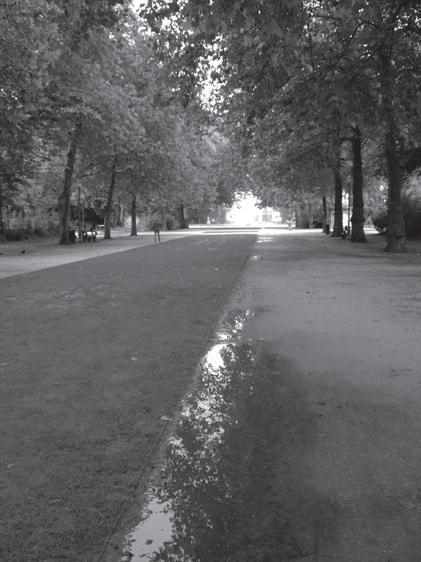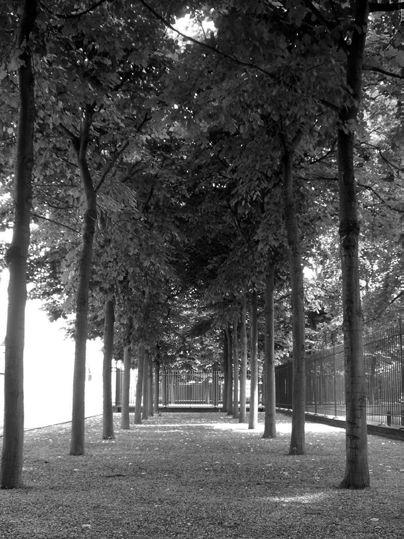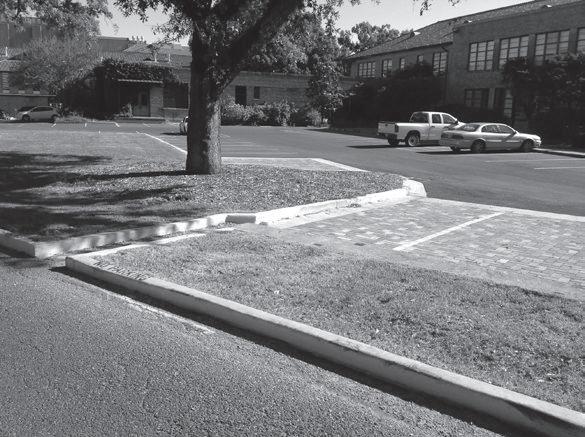
5 minute read
Introduction
Storm and Surface Water drainage management 14
In this chapter you will learn about:
Advertisement
• The wide variety of options for a designer to manage storm water • How storm water management can serve multiple uses
IntroductIon
Approximately 70 percent of the earth’s surface is covered by water, and over 96 percent of this water is saline, found in the oceans. The remaining 4 percent of this water, found on the land, is in the form of lakes, rivers, glaciers and ice fields, and wetlands. Water also exists in the earth’s atmosphere in the form of water vapor. The water vapor is one part of a cyclic system called the water cycle, whereby water vapor condenses in the form of rain or snow to fall to the ground, then disperses across the Earth’s surface to either infiltrate into the ground or travel across the ground as water runoff. Water that infiltrates into the Figure 14.1 Neighborhood street scene reflection in one ground saturates the soil, is taken of the urban canals in Delft, the Netherlands

up by plants, or migrates beyond the surface to recharge the underground aquifer. As runoff, surface water feeds streams, lakes, and other water bodies. Water on the surface that permeates into the soil later will transpire or evaporate from the soil and water bodies as water vapor. The water vapor returns to the atmosphere later to resume the natural water cycle.
Water is vital to life, offering a multitude of positive attributes that sustain life and natural processes. Without water, life on this planet would not exist. However, there are situations when life with less water is necessary, particularly when water enters our lives as heavy storms and surface runoff. Storm water that moves across the ground can cause damage and havoc where human beings live, play, and work. Unwanted surface water can cause flooding and damage within the built environment. Moving surface water can cause erosion and undermine walls and structures, causing structural damage. One of the goals of landscape grading is to manage and direct rain and surface flowing water to eliminate or minimize the damage and calamities caused by uncontrolled water. In other cases, it may be desirable to collect and store storm water, as opposed to disposing of it. Stored water can be used for irrigation and other desirable and sustainable water management practices.
If you look carefully in the right of the middle ground in Figure 14.2, you will see a pattern of leaves that echoes the swale almost precisely. The position of the leaves serves as a reminder of the amount of water that filled the swale during evening rains that fell several hours earlier. The swale was filled at the height of the storm to the level where the leaves were deposited. The area is not a great expanse of lawn, but it managed to receive a

Figure 14.2 Leaves as a watermark or witness to the level of storm water that filled the grassy swale after a late afternoon rain
significant amount of water that moved at a sufficient speed and force to cast the leaves uphill from the swale.
Managing storm water is one of the important purposes of landscape grading. In addition to modifying existing topography to accommodate the various program elements, further modification of the topography has the purpose of redirecting surface water flow from places water is not wanted to other locations on the project site. Storm water management can take many forms and includes a variety of systems.


Figures 14.3-a and 14.3-B Drainage problems: Handicap parking space (A), Apartment parking lot (B)
Scenes such as the ones shown in Figures 14.3-A and 14.3-B illustrate storm water drainage problems. Unwanted storm water has been left standing in the handicap parking space in Figure 14.3-A, making the space temporarily unusable. This situation could have, and should have, been avoided. In this case, one grading solution would have been to change the slope of the parking lot so that surface water is directed away from the curbs, to either a planting area or driveway. Another solution, if the topography would not allow surface water to be directed to another location, would have been to install a catch basin where the water is now collecting. The standing water in Figure 14.3-B is the result of several possible causes: 1. An inadequate grading plan created a depression where storm water could collect.
2. Ground settlement may have caused a depression. 3. The road to the left may have been redone, creating a dam to block water draining from the parking lot.
In nearly every site-grading design problem, there are several alternative solutions for handling storm water. Which is the best solution depends on project budget, governmental requirements, design considerations, and functional activities and uses. Soil erosion is caused by water moving across the ground surface as a concentrated, fast-moving flow, or by a surface water sheet flowing over a steep slope. Figure 14.4 shows the result of storm water that has backed up along a parking lot curb, spilling over the side then moving down a steep, poorly maintained slope. Over time the erosion became worse as the slope became increasingly exposed with the loss of grass to protect and hold the soil. Examples of different approaches to handling surface storm water are described in the following sections. The examples represent a broad range of approaches to collecting, storing, and transporting storm water. In some cases the water is stored on-site, and in other examples the water is collected then carried off-site by an underground pipe or canal to a municipal storm water disposal system. In today’s world, where sustainable design and best water management practices are steadily becoming the norm, site-grading designs incorporate a range of strategies for maintaining water on-site, in retention ponds or water gardens, or stored for later uses such as for irrigation. Other grading design approaches direct and slow down surface water to allow absorption into the soil and to recharge Figure 14.4 Slope erosion adjacent to a parking lot underground aquifers.










